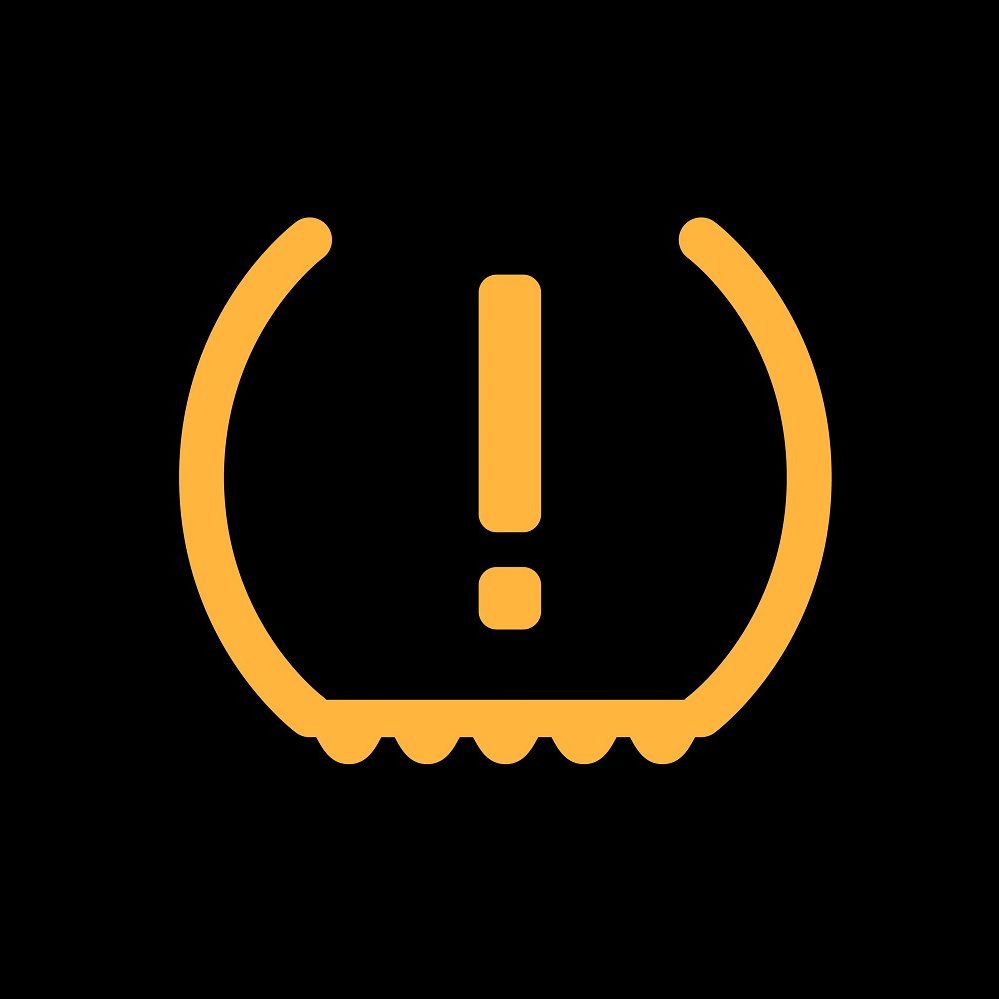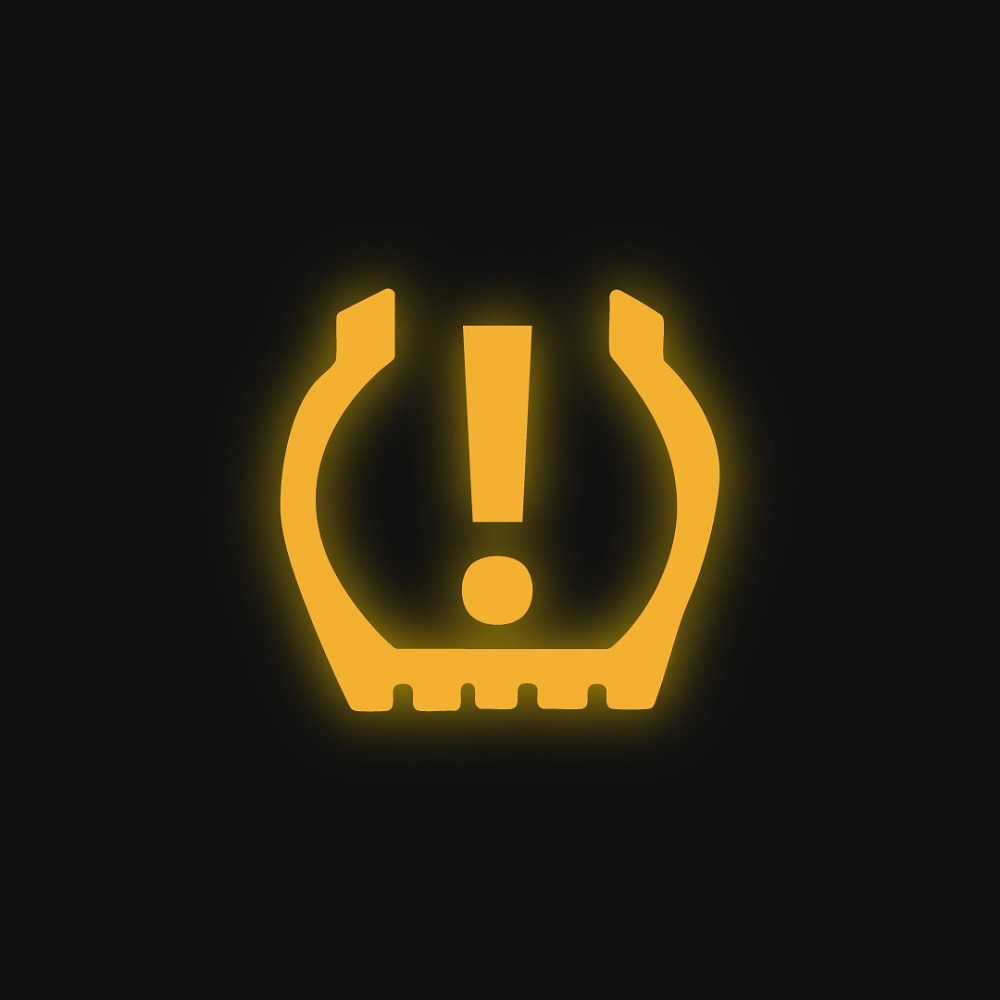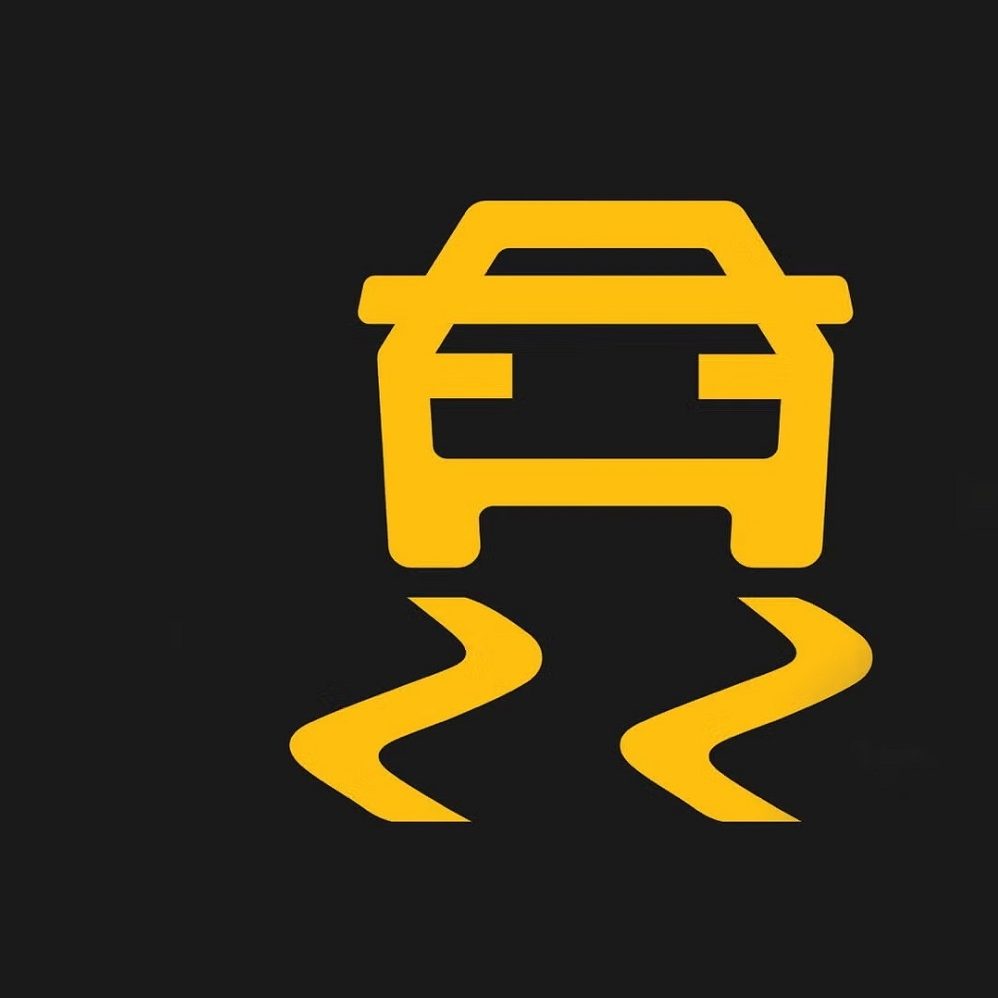Common Yellow Warning Lights in Vehicles
Yellow car warning lights are crucial indicators on your car’s dashboard. They alert drivers to potential issues that require attention. Understanding these lights can help you address problems promptly and maintain vehicle safety.
Check Engine Light
The check engine light signals problems with your engine or its components. It can indicate minor issues like a loose gas cap or major engine malfunctions. Address this light as soon as possible to prevent further damage.
ABS (Anti-lock Braking System) Light
The ABS light illuminates when there’s a problem with the anti-lock braking system. This system prevents wheel lockup during braking. If this light turns on, braking effectiveness may be reduced, especially in wet or icy conditions.

Tire Pressure Monitoring System (TPMS) Light
The TPMS light warns of underinflated tires. It helps maintain tire safety and improve fuel efficiency. Check your tire pressure immediately to avoid flat tires or blowouts.
Traction Control Light
The traction control light activates when your car detects wheel slippage. It typically turns on during wet, snowy, or icy conditions. If it stays on, it may indicate a system malfunction that needs inspection.
Identifying and addressing these yellow car warning lights promptly prevents small problems from becoming larger, costlier issues. Ensure regular maintenance for your vehicle’s optimal performance and safety.
Causes of Yellow Warning Lights Activating
Yellow car warning lights can activate for various reasons. Recognizing these causes helps address issues quickly. The main triggers are mechanical issues, electrical problems, and sensor malfunctions.
Mechanical Issues
Mechanical problems are a common cause of yellow car warning lights. Worn-out parts, like brake pads or belts, can trigger alerts. For example, the ABS light may turn on due to damaged brakes or sensors. Engine-related warning lights may appear if there is an issue with vital components like the fuel system or exhaust. Timely inspection of these parts prevents severe damage and costly repairs.
Electrical Problems
Electrical issues can disrupt your car’s normal functions and trigger warning lights. Faulty wiring, blown fuses, or weakened battery connections are frequent culprits. For instance, dimming dashboard lights or sudden loss of radio functions might accompany these warnings. Since modern vehicles heavily rely on electronics, addressing electrical issues is essential.
Sensor Malfunctions
Modern cars have numerous sensors monitoring different systems. A malfunctioning sensor can incorrectly trigger yellow warning lights. For example, the tire pressure monitoring system (TPMS) may send a false alert due to a defective sensor. Similarly, a worn-out oxygen sensor may activate the check engine light. Regular maintenance and timely sensor replacement can prevent such false alarms.
Understanding the causes of yellow warning lights allows you to address them before they become major issues. Always pay attention to these alerts and take prompt action to maintain your vehicle’s performance and safety.

What to Do When a Yellow Warning Light Turns On
When a yellow warning light appears on your dashboard, taking immediate action is crucial. Ignoring these warnings can lead to serious issues and costly repairs. Here are steps to follow when a yellow light signals:
Deciphering the Meaning of the Light
The first step is understanding what the warning symbolizes. Check the dashboard to identify the specific light. Different lights indicate different issues, such as engine problems, low tire pressure, or a malfunctioning system. Recognizing the symbol enables you to determine the urgency of the problem. Pay attention to how the vehicle behaves when the light is on.
Checking the Owner’s Manual
Your car’s owner’s manual is an essential reference. Each warning light is explained in detail. By consulting the manual, you can learn about the possible issues and suggested actions. This step will help you decide whether the issue can be resolved quickly or requires professional help.
Visiting a Professional Mechanic
If you’re unsure about the severity of the warning, visit a certified mechanic. They have diagnostic tools to pinpoint the issue accurately. Do not delay a visit if you suspect a serious problem. Early diagnosis can prevent damage and ensure driver safety. Regularly servicing your vehicle reduces the risk of unexpected breakdowns and warning lights.
Taking prompt action on yellow car warning lights ensures your vehicle remains safe and functional. These steps help you resolve problems effectively and prevent escalation.
Importance of Addressing Yellow Warning Lights
Yellow car warning lights are essential indicators of potential issues in your vehicle. Ignoring these lights can lead to serious problems and expensive repairs. Addressing them promptly ensures your car remains in good condition.
![]()
Avoiding Further Damage
Yellow warning lights often signal emerging issues in your car. Ignoring them may worsen the problem over time. For example:
- A check engine light can point to small issues like a loose gas cap or major engine troubles. Delaying repairs could result in extensive engine damage that’s costly to fix.
- The ABS light could indicate damaged brakes. Neglecting this can compromise braking effectiveness and endanger safety.
- The TPMS light signals underinflated tires. Leaving this unchecked might lead to tire blowouts or reduced fuel efficiency.
By addressing these lights early, you avoid larger, expensive damage to your vehicle.
Ensuring Driver Safety
Yellow warning lights are not just about vehicle maintenance; they’re about safety too. Failing to act on these alerts could increase risks, such as:
- Reduced control: Malfunctions in systems like traction control or ABS can lead to dangerous situations in bad weather.
- Tire failure: The TPMS light warns of potential flat tires or blowouts, crucial for safe driving.
- Engine trouble: A prolonged check engine light might signal critical engine issues affecting vehicle performance.
Taking action as soon as warning lights appear minimizes risks for drivers and passengers.
Handling yellow car warning lights responsibly ensures both vehicle longevity and driver safety. Regular maintenance and timely responses reduce unexpected breakdowns and accidents, keeping your car in top shape.
Differences Between Yellow, Red, and Green Warning Lights
Understanding the differences between yellow, red, and green warning lights is crucial for safe driving. These colors carry distinct meanings and indicate varying levels of urgency.
Yellow vs Red: Severity Levels
Yellow warning lights are cautionary signals. They indicate potential issues that require attention soon. While not an emergency, they suggest checking the matter to avoid further problems. Examples include the Check Engine Light, ABS Light, or TPMS Light.
Red warning lights, however, are critical alerts. They demand immediate action to ensure safety. Ignoring these lights could result in severe damage or accidents. For example:
- Low oil pressure
- Overheating engine
- Critical brake system failure
In short, yellow lights are warnings, while red lights indicate serious, urgent problems.
Green Lights: Indicators of System Functioning
Green warning lights are typically informational. They show that a specific feature or system is active and functioning. These lights usually require no action and are not a cause for concern. Common green lights include:
- Cruise control indicator
- Turn signal indicators
- Headlight indicators
While green lights signal normal function, staying attentive to their meaning is crucial. For example, ensure you deactivate cruise control when it’s no longer needed.
By recognizing the differences between yellow, red, and green lights, you can respond correctly. Yellow lights prompt timely maintenance, red lights call for immediate action, and green lights offer helpful reminders.

Tips for Preventing Yellow Warning Lights
Yellow car warning lights serve as alerts to potential issues. Preventing these lights from appearing reduces unexpected breakdowns and costly repairs. Here are effective tips to keep these warning lights at bay:
Regular Car Maintenance
- Follow Scheduled Servicing: Stick to your vehicle’s maintenance schedule provided by the manufacturer. Routine servicing helps detect issues early and ensures all systems function well.
- Inspect Critical Systems: Pay attention to major parts like the engine, brakes, and battery regularly. Mechanical and electrical problems causing yellow lights are often preventable with timely checks.
- Replace Worn-Out Parts: Replace aging components like brake pads, spark plugs, and belts before they fail. Preventative measures help keep your car running optimally.
- Monitor Sensors: Ensure key sensors like tire pressure, oxygen, and engine sensors are working properly. Sensor malfunctions can cause false warning lights.
Checking Systems and Fluids Frequently
- Check Fluids Regularly: Monitor vital fluids such as engine oil, brake fluid, and coolant. Low or dirty fluids can trigger warning lights and harm your car.
- Inspect Tire Pressure Weekly: Keep tire pressure at the recommended level by checking it weekly. Proper inflation helps prevent TPMS warnings and improves fuel efficiency.
- Inspect Electrical Connections: Verify that battery terminals and wiring are secure and corrosion-free. Faulty connections may lead to electrical issues activating warning lights.
- Watch for Unusual Changes: Stay alert to unusual behaviors like strange noises or reduced engine performance. Immediate checks can avert more severe problems.
By maintaining your car regularly and inspecting systems frequently, you reduce the risk of yellow car warning lights appearing. These preventative measures help ensure optimal safety and performance.
When to Seek Immediate Assistance for Yellow Lights
Understanding when to seek immediate assistance for yellow warning lights is crucial for safe driving. Ignoring persistent signals or unusual sounds tied to these lights can lead to severe damage.
Persistent Warning Signals
Yellow warning lights should turn off after resolving minor issues. Persistent signals mean something is wrong. If a light stays illuminated, it indicates unresolved problems. Examples include ongoing check engine or TPMS lights. Persistent lights often point to deeper issues requiring immediate attention from a mechanic. Delaying action can lead to expensive repairs or reduced safety.
Unusual Sounds Accompanying Lights
Unusual sounds paired with warning lights could signal critical problems. For example:
- Grinding noises might point to brake damage with an ABS light on.
- Knocking sounds can signal engine trouble alongside the check engine light.
- Hissing noises may indicate a coolant or oil leak.
Any strange sound combined with a yellow warning light demands urgent inspection. Ignoring these indicators could worsen the issue and put safety at risk.
When yellow warnings persist or occur with strange sounds, prioritize seeking professional help. Quick intervention ensures the safety and durability of your vehicle.

Understanding Common Causes of Warning Lights
Common Technical Issues
Many warning lights activate due to common technical issues. For example, the check engine light may illuminate for various reasons, including a loose gas cap, a failing sensor, or engine misfires. Each of these issues requires different levels of attention and remedy. By familiarizing yourself with the common causes behind these warning lights, you can better prepare for potential issues and act accordingly.
Preventive Maintenance Strategies
Implementing good preventive maintenance strategies can minimize the likelihood of warning lights appearing unexpectedly. Regularly checking and maintaining your vehicle’s fluids, brakes, and battery ensures that everything operates smoothly. Scheduling routine inspections allows mechanics to perform diagnostics early, identifying and rectifying issues before they lead to warning lights illuminating on your dashboard. Adopting this proactive maintenance approach can extend your vehicle’s life while providing you with peace of mind.
Knowing When to Seek Help
Recognizing Limitations
While some warning lights may indicate minor issues that you can resolve on your own, others require professional assistance. Understanding your limitations as a driver will inform your decision-making. If you’re unsure about a warning light’s significance or feel uncomfortable attempting repairs, seeking help is the best course of action. Relying on a qualified mechanic ensures that problems are correctly diagnosed and addressed, minimizing the risk of future complications.
Building a Relationship with a Trusted Mechanic
Establishing a relationship with a trusted mechanic can enhance your overall vehicle maintenance experience. A reliable mechanic will become familiar with your vehicle and its history, allowing them to provide tailored support. Regular check-ups and open lines of communication ensure you are informed about your vehicle’s health. Developing this relationship can also help you trust their recommendations when warning lights appear, knowing they have your best interests at heart.
Conclusion: Stay Informed and Prepared
In conclusion, understanding yellow car warning lights is essential for maintaining your vehicle’s health and ensuring your safety on the road. By familiarizing yourself with warning lights, being proactive in your maintenance, and knowing when to seek professional help, you can navigate your driving experience with confidence. Adopt a proactive mindset and commit to regular vehicle checks to prevent warning lights from becoming a frequent concern. Embrace the freedom of the road while prioritizing your safety and well-being!

Leave a Reply